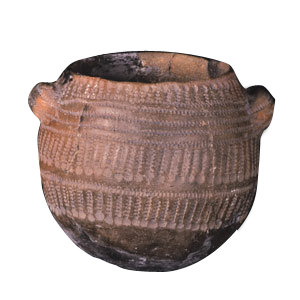I cannot find the relevant paper and I am not sure how this news item is different from what we already knew, though it is true that the Eastern Adriatic region, at the origin of Cardium Pottery Neolithic is often ignored and misunderstood, with the focus often being in Central and East Balcanic Neolithic and its derived variant in Central Europe: the Danubian Neolithic (Linear Pottery culture, LBK).
Yet at least as important as these was the Mediterranean Neolithic and, for this, it all began in Dalmatia and nearby areas (Bosnia, Montenegro, coastal Albania), soon spreading to Italy and beyond, to SE France, the coasts of Iberia and some coastal enclaves in North Africa.
The news item I am referring to is at Science News today and it has some interesting paragraphs, obtained from archaeologist Marko Mendušic and his US colleague Andrew Moore:
Their discoveries support the idea that agricultural newcomers to southern Europe built villages without encountering local nomadic groups, Moore asserts. Earlier excavations at Neolithic sites in Germany and France raise the possibility that hunter-gatherers clashed with incoming villagers in northern Europe, he notes.
Surprisingly, Pokrovnik and Danilo Bitinj residents grew the same plants and raised the same animals, in the same proportions, as today’s Dalmatian farmers do, Moore says. Excavated seeds and plant parts show that ancient villagers grew nine different domestic plants — including emmer, oats and lentils — and gathered blackberries and other wild fruits.
Animal bones found at the two villages indicate that residents primarily herded sheep and goats, along with some cattle and a small number of pigs.
This dominance of sheep and goat herding, along with all the classical array of Neolithic domesticates in the wider region, is a characteristic of Mediterranean Neolithic.
Aside from farming, Neolithic villagers in Dalmatia were “oriented toward the sea, and enjoyed extensive long-distance contacts,” Moore adds. Chemical analyses of obsidian chunks found at Pokrovnik and Danilo Bitinj, directed by archaeologist Robert Tykot of the University of South Florida in Tampa, trace most of them to Lipari, an island off Sicily’s north coast.
This seafaring inclination, not fearing even the high seas, is another characteristic of Cardium Pottery Neolithic.
Of course, the third trait is their unique pottery (left: an example from Catalonia), not painted but imprinted, often with the shell of what used to be the genus Cardium, now superfamily Cardidae (cockles in English, berberechos in Spanish and Galician, escopinyas in Catalan, berbigoes in Portuguese, cocques and bucardes in French).
However both in the original area of the Western Balcans and in the extended area of Italy and the West Mediterranean, soon the pottery styles evolved into other forms known as a whole as Epi-Cardial.
There is also some presence of this pottery in at least one of the earliest Greek Neolithic sites, Otzaki, and later also in Lebanon and coastal Syria (Byblos facies of the Amuq-Byblos culture), where it must have arrived from Europe (because of the rather late time frame).
The expansion of this Neolithic culture is, with some exceptions, characterized by the assimilation of earlier populations, something evident in the continuity of local Epipaleolithic toolkits.

many locals here have their origins in Dalmatia. my understanding is that it consists mostly of the islands off the west coast of the Balkan Peninsular.
ReplyDelete"Aside from farming, Neolithic villagers in Dalmatia were 'oriented toward the sea, and enjoyed extensive long-distance contacts'"
Makes sense therefore.
'Their discoveries support the idea that agricultural newcomers to southern Europe built villages without encountering local nomadic groups, Moore asserts".
Presumably because these 'agricultural newcomers' were the first people there. Yet another example of the lack of efficient boating in the Mediterranean before the Neolithic.
"it all began in Dalmatia and nearby areas (Bosnia, Montenegro, coastal Albania)"
So quite possibly it spread to the mainland after becoming well established on the islands, by which time immigrants could easily out-number any 'local nomadic groups'.
Probably these Dalmatians were J2 and E-V13 (and perhaps some kind of I), but where R1b could come from if not from Italy?
ReplyDelete@Terry:
ReplyDelete"Presumably because these 'agricultural newcomers' were the first people there".
In the late UP there were people in that area. There's some rock art from that period in Dalmatia. They were in the Italian province, I understand, as the Adriatic was then much smaller.
I would take this claim with a good pinch of salt because of what I just said and also because there are almost no antecedents (other than Otzaki "Pre-Sesklo"). Also this culture was clearly prone to assimilate natives elsewhere, so they may have been partly native since the beginning.
...
@Gioiello:
"Probably these Dalmatians were J2 and E-V13 (and perhaps some kind of I)"...
Almost exactly my thoughts. E-V13 seems concentrated towards Albania, J2 is more widespread and probably the safest Neolithic marker, I2a is a clade I consider likely to have spread with Cardium Pottery as well, specially in its Sardinian and SW European variant (I2a1).
"... but where R1b could come from if not from Italy?"
I'd say (for R1b1b2a1, the specifically European clade) Hungary in the Aurignacian (or Gravettian?) period. North Italy did play a role in the flow of these cultures towards the West. Then the two main clades spread from the Franco-Cantabrian region (Magdalenian possibly) and the North Sea area (Hamburgian and Ahrensburgian I guess).
North Italian R1b seems mostly related to the Swiss, excepting some 20% that seems either older (L51* and L11*, a small but interesting fraction) or arguably Neolithic (L23*, this one could be also Paleolithic).
See this map.
Not sure if you mean Italian R1b or in general.